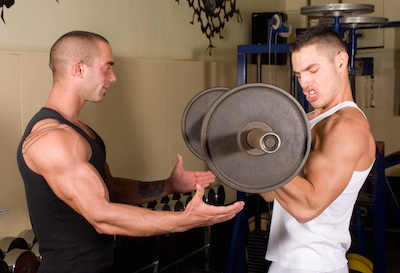Sports Medicine


What Causes Crossfit Injuries?
I think CrossFit can be an excellent form of exercise and training. But, with so many people getting into CrossFit, we’ve also seen an increase in injuries, so it has to be done intelligently. People repeatedly ask me which are the most dangerous CrossFit exercises and are usually shocked when I tell them that none of them are dangerous. “There are no contraindicated exercises, only contraindicated people,” says my friend Scott Livingston, a former strength coach for the Montreal Canadiens, and I’ve used that concept in all my teachings.

IDENTIFYING THE WOUNDED
So what causes CrossFit injuries? There are usually three major
“contraindicated people” causes. The first lies with a new, unconditioned CrossFit athlete who may not have exercised in a long time or even ever. The level of intensity for a beginner may be too high in the daily Workout of the Day (WOD), even though CrossFit athletes are told to only work as hard as they are able and that every WOD is scalable. The truth is that too many beginners lack the work capacity demanded by the WODs, no matter what the intensity is. Second, the CrossFit athlete might have an old injury that did not heal properly and specific exercises used in CrossFit may aggravate it. There is nothing wrong with the exercise; the problem is with the athlete who should not be doing the exercise in the first place until the injury is fixed. You can’t train through an injury and expect it to go away by itself. It just doesn’t work that way. Some injuries need treatment, and rolling around on a foam roller may not be enough. The third “contraindicated people” cause is a lack of program design knowledge and exercise technique. If someone opens a new CrossFit facility and has had no real education or training in complex weight-training exercises such as snatches and clean and jerks used in Olympic lifting or squats and deadlifts used in powerlifting, this can only lead to injuries for his CrossFit athletes. CrossFit exercises can be done safely and effectively, but it can take months—even years—to learn how to properly instruct athletes in movements that can’t be learned in a two-day CrossFit certication seminar.

EASING THE PAIN
The solution to CrossFit injuries is proactive prevention. Before you start training, find out if you have any old injuries or weaknesses that may blow up. Get assessed by a chiropractor or physiotherapist who focuses on sports medicine, to help you determine what, if any, old injuries need to be fixed prior to training and to help guide you on what exercises to avoid due to your limitations. CrossFit gyms could also benefit from using movement screens on all incoming clients to mitigate any potential problems from old injuries. Second, choose your CrossFit facility wisely, and look for experience and education behind a CrossFit Level 1 certification. Find a CrossFit facility run by owners and trainers who are well-educated and can respect your physical limitations. The owner or trainer will need to do a physical exercise assessment to determine what you can and can’t do (and not just blindly tell you to do the WOD with burpees and snatches when you are suffering from a shoulder injury). The facility should dedicate appropriate class time to learning exercises, refining technique, and getting stronger, not just long WODs. The next generation of Intelligent CrossFit has already started, with courses on exercise technique and program design being offered throughout the country and mature CrossFit owners and trainers respecting the contraindicated CrossFit athlete.
To read more interesting sports medicine articles from Dr. Ken, click here!

